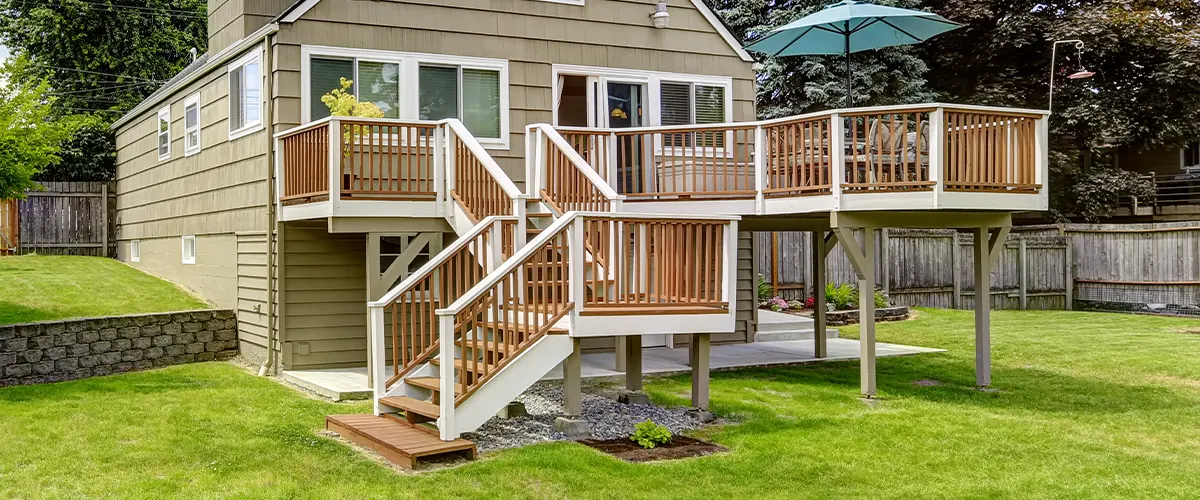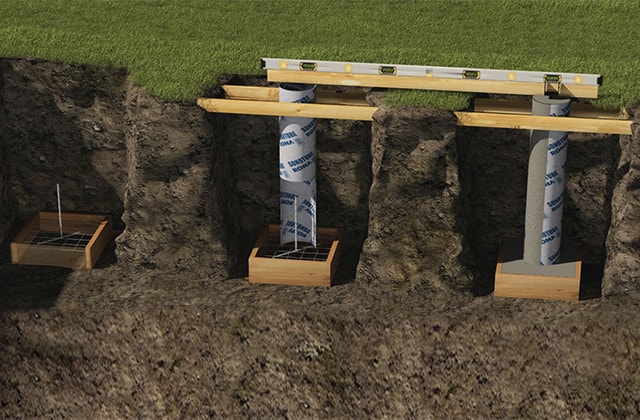Deck Footings 101: Navigating the Basics for a Secure and Long Lasting Deck
Deck Footings 101: Navigating the Basics for a Secure and Long Lasting Deck
Blog Article
Choosing the Right Deck Footings for Stability and Sturdiness
When it pertains to constructing a deck, among one of the most crucial decisions you will make is choosing the ideal grounds for security and resilience. The longevity and safety of your deck depend greatly on the kind of grounds you select, as they give the crucial support and security to stand up to the test of time. With a myriad of options readily available, it can be frustrating to establish which grounds are best suited for your details requirements. In this discussion, we will certainly discover the various kinds of deck footings, consider the crucial elements to weigh when making a choice, and explore the pros and cons of different alternatives. By the end, you will certainly have a more clear understanding of the choices at hand and be much better equipped to make a notified choice for your deck project.
Sorts Of Deck Footings
There are several kinds of deck grounds that can be used, each offering unique benefits and factors to consider. One common kind of footing is the concrete pier footing. These footings contain a round opening loaded with concrete, which gives a strong structure for the deck messages. Concrete pier footings are fairly simple to set up and use superb stability, making them a popular option for lots of deck projects.
These grounds are set up by screwing them into the ground, which develops a safe and secure structure for the deck. They likewise enable for easy change and leveling of the deck if needed.
Conversely, some builders go with precast concrete footings. These footings are made from resilient concrete and can be found in numerous shapes and dimensions to accommodate different deck designs. Precast concrete footings are convenient to install and offer a stable base for the deck framework.
Ultimately, an additional alternative is the post-in-anchor ground system. This sort of ground includes driving a metal anchor into the ground and attaching it to the deck post. It supplies adaptability in terms of positioning the deck posts and appropriates for decks with light-weight structures.
When picking the best kind of deck footing, it is necessary to think about factors such as soil problems, deck load, and regional building ordinance (Deck Footings). Consulting with a professional specialist or architectural engineer can assist make certain the suitable ground is chosen for a secure and stable deck
Factors to Think About When Picking Footings
When choosing the ideal grounds for a deck, it is crucial to carefully take into consideration numerous factors such as dirt conditions, deck lots, and adherence to local building regulations. These aspects play a substantial role in guaranteeing the stability and longevity of the deck framework.
The kind of dirt on which the deck will certainly be built determines the type of footings needed. On the other hand, decks constructed on clay or extensive soils may require grounds that can suit the dirt's tendency to expand and agreement.
An additional essential element is the deck load. The weight of the deck, consisting of the materials used and any potential real-time lots such as furnishings or events, should be taken into account when selecting grounds. The footings must be designed to bear the weight of the deck and disperse it evenly to stop any architectural concerns or failings.
Finally, adherence to neighborhood building ordinance is vital. Building regulations differ from region to area, and it is vital to follow the details demands set by the regional authorities. Deck Footings. These codes guarantee that the deck is constructed safely and fulfills the required standards for architectural integrity and load-bearing ability
Concrete Footings: Advantages And Disadvantages

Concrete footings supply a number of advantages and downsides when utilized as the structure for a deck. On the silver lining, concrete footings provide superb stability and sturdiness. Concrete is a stiff and strong product that can sustain heavy loads and hold up against different weather condition conditions. It additionally has a lengthy life expectancy, making it a dependable option for lasting usage.
Another advantage of concrete grounds is their versatility. They can be poured right into various shapes and dimensions to accommodate different deck styles and setups. Concrete grounds can be customized to fit the specific requirements and needs of the deck structure.
Nonetheless, there are also some disadvantages to using concrete footings. One major negative aspect is the cost and labor associated with their installment. Concrete footings require excavation and typically need the assistance of hefty equipment. This can enhance the overall cost of the deck task and may need professional assistance.

Helical Piers Vs. Sonotubes: Which Is Better?
In thinking about the foundation options for a deck, the contrast between helical piers and sonotubes is crucial in identifying the remarkable selection. They are go to my blog turned right into the ground using hydraulic equipment, providing a resilient and steady foundation for the deck.
The helical plates on the piers produce a strong grasp with the dirt, changing or stopping any type of motion of the deck. Sonotubes, on the other hand, count solely on the concrete filling up for stability, which might not use the same degree of toughness and resistance.
In regards to setup, helical piers are fairly simpler and faster to set up compared to sonotubes. The hydraulic equipment used to twist the piers right into the ground makes certain a efficient and quick procedure. Sonotubes, on the various other hand, need digging openings and putting concrete, which can be labor-intensive and lengthy.
Furthermore, helical piers are an even more functional option. They can be used in different soil conditions and can be adjusted or reinforced if needed. Sonotubes, on the various other hand, might call for extra support, such as rebar, in particular dirt problems or locations with high load demands.
Selecting the Right Footings for Your Deck's Measurements
For ideal architectural stability, it is important to thoroughly select the suitable grounds that straighten with the dimensions of your deck. The measurements of your deck, including its size, height, and width, play a considerable duty in determining the kind and dimension of grounds required.
When selecting footings for your deck, it is very important to take into consideration the load-bearing capability of the dirt. The weight of the deck, combined with the weight of any furniture or individuals on it, applies a significant force on the footings (Deck Footings). Consequently, it is essential to select footings that can appropriately support this weight without moving or sinking in time.
The dimension and form of the footings need to Read Full Article also be thought about. Larger decks with greater dimensions require larger grounds to provide sufficient stability and assistance. The form of the grounds, whether they are square or rounded, relies visit this web-site on the design and design of the deck. In addition, the depth at which the footings are set up must be established based upon the frost line in your area to stop any heaving or moving due to freezing temperature levels.
Verdict
In final thought, selecting the ideal deck grounds is essential for guaranteeing stability and resilience. Variables such as the type of grounds, the deck's dimensions, and the pros and cons of different options need to be considered.
These footings consist of a round opening filled with concrete, which supplies a strong structure for the deck posts. Concrete pier grounds are reasonably simple to mount and supply excellent stability, making them a preferred option for numerous deck tasks.
Precast concrete footings are practical to set up and supply a steady base for the deck framework.
It uses flexibility in terms of placing the deck posts and is suitable for decks with lightweight structures.
Concrete footings supply a number of advantages and negative aspects when utilized as the structure for a deck.
Report this page